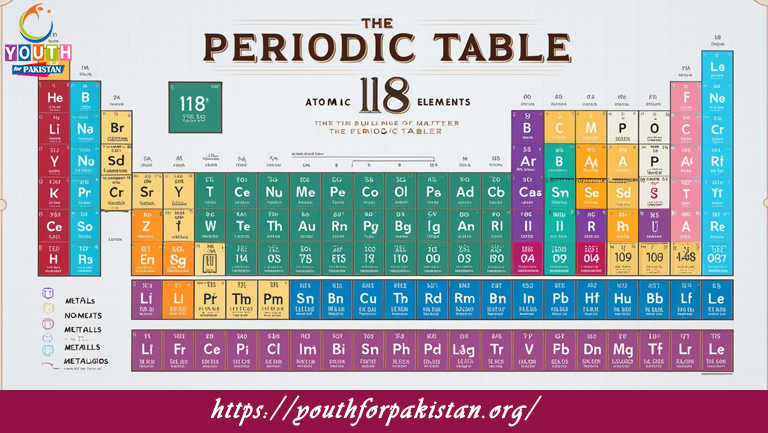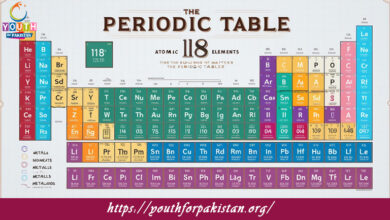Group Trends Melting And Boiling Points MDCAT MCQs

Welcome to the Group Trends Melting And Boiling Points MDCAT MCQs with Answers. In this post, we have shared Group Trends Melting And Boiling Points Multiple Choice Questions and Answers for PMC MDCAT 2024. Each question in MDCAT Chemistry offers a chance to enhance your knowledge regarding Group Trends Melting And Boiling Points MCQs in this MDCAT Online Test.
How do the melting and boiling points generally change as you move down Group 1 of the periodic table?
a) Increase
b) Decrease
c) Remain constant
d) First increase, then decrease
Which group has the highest melting and boiling points among the alkali metals?
a) Group 1
b) Group 2
c) Group 13
d) Group 14
In which group do the elements exhibit the highest boiling points?
a) Group 1
b) Group 2
c) Group 17
d) Group 18
How does the melting point trend change in Group 17 (halogens) as you move down the group?
a) Increases
b) Decreases
c) Remains constant
d) First increases, then decreases
Which of the following elements in Group 14 has the highest boiling point?
a) Carbon
b) Silicon
c) Germanium
d) Lead
In Group 2 elements, which has the highest melting point?
a) Beryllium
b) Magnesium
c) Calcium
d) Strontium
How do the boiling points of noble gases change as you move down Group 18?
a) Increase
b) Decrease
c) Remain constant
d) First increase, then decrease
Which of the following elements in Group 16 has the lowest melting point?
a) Oxygen
b) Sulfur
c) Selenium
d) Tellurium
In which group do the elements have the lowest melting points?
a) Group 1
b) Group 2
c) Group 15
d) Group 16
How does the melting point of elements in Group 13 trend as you move from boron to thallium?
a) Increases
b) Decreases
c) Remains constant
d) First increases, then decreases
What is the trend in boiling points for Group 1 elements as you go from lithium to cesium?
a) Increases
b) Decreases
c) Remains constant
d) Fluctuates
Which element in Group 14 has the lowest melting point?
a) Carbon
b) Silicon
c) Germanium
d) Tin
As you move down Group 15, how do the melting and boiling points generally change?
a) Increase
b) Decrease
c) Remain constant
d) First increase, then decrease
In which group do the elements have the highest melting points?
a) Group 1
b) Group 2
c) Group 14
d) Group 15
How do the melting and boiling points change across a period from left to right?
a) Increase
b) Decrease
c) First increase, then decrease
d) Remain constant
Which element in Group 17 has the highest melting point?
a) Fluorine
b) Chlorine
c) Bromine
d) Iodine
How do the boiling points of Group 2 elements change from beryllium to barium?
a) Increase
b) Decrease
c) Remain constant
d) First increase, then decrease
Which of the following has the highest melting point among Group 16 elements?
a) Oxygen
b) Sulfur
c) Selenium
d) Tellurium
In which group of the periodic table do elements have the lowest boiling points?
a) Group 1
b) Group 14
c) Group 17
d) Group 18
What is the trend in melting points for Group 13 elements from boron to thallium?
a) Increase
b) Decrease
c) Remain constant
d) Fluctuate
In Group 1 elements, which element has the highest melting point?
a) Lithium
b) Sodium
c) Potassium
d) Rubidium
Which Group 2 element has the lowest melting point?
a) Beryllium
b) Magnesium
c) Calcium
d) Barium
How do the melting points of Group 18 elements change as you move down the group?
a) Increase
b) Decrease
c) Remain constant
d) Fluctuate
What is the trend in the boiling points of Group 17 elements from fluorine to iodine?
a) Increase
b) Decrease
c) Remain constant
d) First increase, then decrease
Which element in Group 15 has the highest boiling point?
a) Nitrogen
b) Phosphorus
c) Arsenic
d) Antimony
As you go down Group 14, how does the melting point trend?
a) Increases
b) Decreases
c) Remains constant
d) Fluctuates
In Group 17, which element has the highest boiling point?
a) Fluorine
b) Chlorine
c) Bromine
d) Iodine
Which of the following has the lowest boiling point in Group 14?
a) Carbon
b) Silicon
c) Germanium
d) Tin
In Group 2 elements, which one has the highest boiling point?
a) Beryllium
b) Magnesium
c) Calcium
d) Strontium
How do the melting and boiling points of Group 13 elements generally trend?
a) Increase
b) Decrease
c) Remain constant
d) First increase, then decrease
Which element in Group 18 has the lowest melting point?
a) Helium
b) Neon
c) Argon
d) Krypton
In Group 1, which element has the lowest melting point?
a) Lithium
b) Sodium
c) Potassium
d) Rubidium
What is the trend in boiling points as you move down Group 16 elements?
a) Increase
b) Decrease
c) Remain constant
d) Fluctuate
How does the melting point of Group 14 elements change as you go from carbon to lead?
a) Increase
b) Decrease
c) Remain constant
d) Fluctuate
Which element in Group 2 has the highest boiling point?
a) Beryllium
b) Magnesium
c) Calcium
d) Barium
In Group 13, how does the boiling point trend from boron to thallium?
a) Increase
b) Decrease
c) Remain constant
d) Fluctuate
What trend is observed in the boiling points of Group 1 elements as you move down the group?
a) Increase
b) Decrease
c) Remain constant
d) Fluctuate
Which Group 17 element has the lowest melting point?
a) Fluorine
b) Chlorine
c) Bromine
d) Iodine
In Group 15, which element exhibits the lowest boiling point?
a) Nitrogen
b) Phosphorus
c) Arsenic
d) Antimony
How does the melting point of Group 16 elements change from oxygen to tellurium?
a) Increases
b) Decreases
c) Remains constant
d) Fluctuates
If you are interested to enhance your knowledge regarding Physics, Chemistry, Computer, and Biology please click on the link of each category, you will be redirected to dedicated website for each category.





